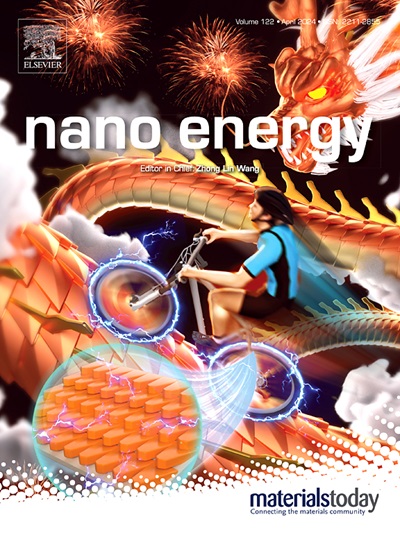Advances in polyvinylidene fluoride (PVDF) for self-powered wearable physiological monitoring and energy harvesting applications
IF 17.1
1区 材料科学
Q1 CHEMISTRY, PHYSICAL
引用次数: 0
Abstract
Polyvinylidene fluoride (PVDF) has emerged as one of the most extensively investigated piezoelectric polymers, owing to its remarkable piezoelectric performance, outstanding chemical stability, mechanical flexibility, low density, and facile processability. These intrinsic characteristics render PVDF a highly attractive material for developing wearable physiological monitoring devices. Despite this promise, ensuring a reliable and continuous power supply remains a significant challenge for the long-term operation of wearable systems. Recent advancements in PVDF processing and fabrication techniques have paved the way for its seamless integration into energy harvesting devices, enhancing the prospects of self-powered wearable sensors. This review presents a comprehensive overview of the latest progress in PVDF-based technologies, focusing on their implementation in wearable electronics and energy harvesting systems, such as triboelectric nanogenerators and hybrid devices. Key discussion areas include the historical development of PVDF, its structure–property relationships, biocompatibility, scalability, and performance under dynamic conditions. The review also explores fundamental operational principles, innovative fabrication methods, and PVDF's pivotal role in health monitoring and sustainable energy harvesting. Contributions from leading research groups worldwide are highlighted, emphasizing the importance of PVDF’s piezoelectric, pyroelectric, and triboelectric properties in advancing bioengineering technologies, especially for physiological monitoring applications.

聚偏氟乙烯(PVDF)自供电可穿戴生理监测和能量收集应用研究进展
聚偏氟乙烯(PVDF)由于其优异的压电性能、优异的化学稳定性、机械柔韧性、低密度和易加工性而成为研究最广泛的压电聚合物之一。这些固有特性使PVDF成为开发可穿戴生理监测设备的极具吸引力的材料。尽管前景看好,但确保可靠和连续的电力供应仍然是可穿戴系统长期运行的重大挑战。PVDF加工和制造技术的最新进展为其与能量收集设备的无缝集成铺平了道路,增强了自供电可穿戴传感器的前景。本文综述了基于pvdf的技术的最新进展,重点介绍了它们在可穿戴电子设备和能量收集系统中的应用,如摩擦纳米发电机和混合设备。主要讨论领域包括PVDF的历史发展,其结构-性能关系,生物相容性,可扩展性和动态条件下的性能。该综述还探讨了PVDF的基本操作原理、创新的制造方法以及PVDF在健康监测和可持续能源收集中的关键作用。来自全球领先研究小组的贡献被突出,强调PVDF的压电、热释电和摩擦电特性在推进生物工程技术中的重要性,特别是在生理监测应用方面。
本文章由计算机程序翻译,如有差异,请以英文原文为准。
求助全文
约1分钟内获得全文
求助全文
来源期刊

Nano Energy
CHEMISTRY, PHYSICAL-NANOSCIENCE & NANOTECHNOLOGY
CiteScore
30.30
自引率
7.40%
发文量
1207
审稿时长
23 days
期刊介绍:
Nano Energy is a multidisciplinary, rapid-publication forum of original peer-reviewed contributions on the science and engineering of nanomaterials and nanodevices used in all forms of energy harvesting, conversion, storage, utilization and policy. Through its mixture of articles, reviews, communications, research news, and information on key developments, Nano Energy provides a comprehensive coverage of this exciting and dynamic field which joins nanoscience and nanotechnology with energy science. The journal is relevant to all those who are interested in nanomaterials solutions to the energy problem.
Nano Energy publishes original experimental and theoretical research on all aspects of energy-related research which utilizes nanomaterials and nanotechnology. Manuscripts of four types are considered: review articles which inform readers of the latest research and advances in energy science; rapid communications which feature exciting research breakthroughs in the field; full-length articles which report comprehensive research developments; and news and opinions which comment on topical issues or express views on the developments in related fields.
 求助内容:
求助内容: 应助结果提醒方式:
应助结果提醒方式:


